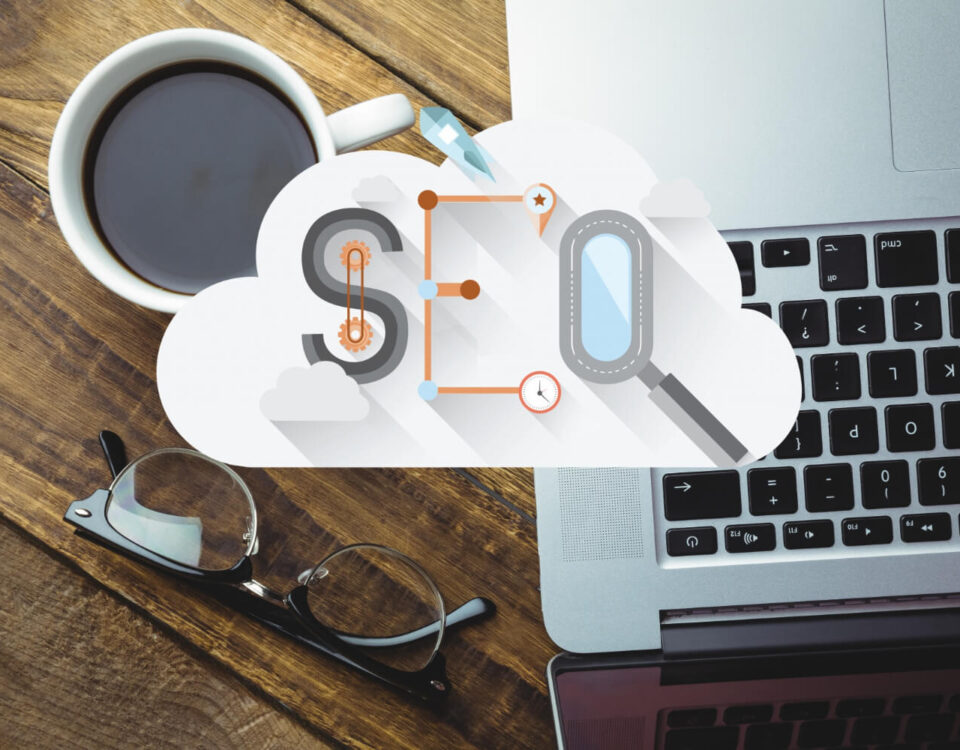The technological and marketing efforts made to drive traffic to a website, keep users interested, and convince them to purchase collectively referred to as website performance. Website performance optimisation involves tracking and evaluating your website’s effectiveness and finding methods to improve it in terms of speed, functionality, design, SEO, and online advertising.
What Are The Goals Of Website Performance Optimisation?
The primary goals of website performance optimisation are to provide a better user experience, increase website speed, improve conversion rates, enhance search engine rankings, and reduce server load.
Now, let’s discuss different essential techniques for website performance optimisation.
According to research, users would wait between 0.3 and 3 seconds on average before losing concentration. If it takes more time than that for your website to show crucial information, the user may become distracted and may even exit the browser window.
Speedier websites offer better user experiences, reduced bounce rates, greater conversion rates, and better rankings in organic search.
Why Does Website Speed Alter?
A number of factors might be causing your site to load slowly. Anything might be the reason, but the following are the most frequent ones:
- The usage of JavaScript and CSS
- Unwise server/hosting tactics
- Dimension of the big image
- Web browsers not using any cache
- A disproportionate quantity of plugins and widgets
- Image and other resource hotlinking from laggy servers
- Amount of traffic
- Older browsers
- Mobile devices’ slow network connections
This indicates that there are a variety of actions you can take to improve website performance metrics. However, you need to evaluate your page load speed before you begin troubleshooting to enhance website performance.
Best Practices for Website Performance Optimisation are: Everything in the modern digital world is based on speed. A website’s complexity and visual appeal are irrelevant if it takes a long time to load. There are many reasons why your web pages could load slowly, but regardless of the cause, this blog shares with you some helpful suggestions and strategies for website performance optimisation to guarantee a positive user experience. The major website performance metrics that may help you optimise your site as well as enhance user experience and website speed is:
Reduce the Number of HTTP Requests: HTTP (Hypertext Transfer Protocol) requests are made by the browser to retrieve all the files needed to load a web page, such as images, scripts, and stylesheets. Each request made by the browser takes a certain amount of time to process and download the file from the server. Therefore, the more HTTP requests a webpage requires, the longer it takes to load.
To reduce the number of HTTP requests, you can take the following steps
Combine Files: Combining files, such as CSS and JavaScript files, reduce the number of requests the browser needs to make to the server.
Use CSS Sprites: CSS sprites combine multiple images into a single image file, reducing the number of HTTP requests required to load the webpage.
Minimise external scripts: External scripts, such as social media widgets or analytics tracking codes, can add significant overhead to the webpage, increasing the number of HTTP requests required to load the page.
Optimising Images
Optimising image sizes is a critical step to improving website speed. Large images take longer to load, slowing down the page load time and negatively impacting the user experience. To optimise image sizes, you can take the following steps:
Choose the Right File Format: Choosing the right file format can also help reduce your images’ size. For example, JPEG is ideal for photographs, while PNG is better for graphics and images with transparent backgrounds.
Use Responsive Images: Responsive images allow you to serve images optimised for the device and screen size used to view the website. This means the images will be smaller for smaller screens, reducing the page load time on mobile devices.
Use a Content Delivery Network (CDN)
A CDN is a network of servers located around the world that cache and deliver website content to users based on their geographic location. By distributing content across multiple servers, CDNs can reduce the time it takes for website content to reach users and improve website performance metrics. Here are some benefits of using a CDN:
Increased Reliability: CDNs distribute website content across multiple servers, reducing the risk of website downtime due to server failure or traffic spikes.
Better SEO: Website speed is an important ranking factor in search engine algorithms , and using a CDN can improve website performance metrics and search engine rankings.

Choose the Right Hosting Service Plan
Choosing the right hosting service plan is critical to ensure that your website runs smoothly and efficiently. The hosting service plan you choose can significantly impact your website’s performance, security, and uptime. Here are some factors to consider when choosing a hosting service plan:
Server Performance:Server performance is another crucial factor to consider. Ensure your hosting plan provides enough resources, such as CPU, RAM, and storage, to handle your website speed, traffic, and content.
Scalability: Choose a hosting plan that allows you to scale your website as your traffic and content grow easily. Look for plans that offer the flexibility to upgrade or downgrade as needed without causing downtime or data loss.
Traffic and Bandwidth: Consider the amount of traffic your website is expected to receive and choose a hosting plan that provides sufficient bandwidth to handle that traffic.
Adopt Cloud-Based Website Monitoring
Cloud-based website monitoring is an effective way to monitor your website’s performance and ensure that it is running smoothly. With cloud-based website monitoring, you can track website uptime, performance, and user experience from multiple locations around the world.
Real-time Monitoring: Cloud-based website monitoring provides real-time monitoring of your website’s performance, allowing you to identify and address issues quickly.
Global Monitoring: With cloud-based website monitoring, you can monitor your website’s performance from multiple locations around the world. This allows you to identify issues related to website latency or accessibility in different regions.
Reduce the Number of Plugins
Reducing the number of plugins on your website can significantly impact website performance metrics and speed. Here are some reasons why you should reduce the number of plugins on your website:
Compatibility Issues: Installing too many plugins can also cause compatibility issues between them, resulting in website crashes and errors.
User Experience: More plugins can also affect the user experience on your website. Slow page load times can lead to higher bounce rates and lower engagement.
Use Website Caching
Website caching temporarily stores website data and files in the user’s browser or a local server. When a user visits a website, the cached files are retrieved from the user’s browser or server rather than from the website’s server. This reduces the number of requests the website’s server receives and speeds up page load times.
Improved Page Load Times: Caching can significantly improve your website’s page load times, critical for providing a positive user experience.
Reduced Server Load: Caching reduces the number of requests your website’s server receives, reducing server load and preventing your website from crashing during traffic spikes.
Use a Well-Optimised WordPress Theme
Using a well-optimised WordPress theme is essential for ensuring your website’s performance and speed. Here are some reasons why you should use a well-optimised WordPress theme.
Faster Page Load Times: Well-optimised WordPress themes are designed with performance in mind and are optimised for faster page load times. Because of this, your website will load more quickly, enhancing user experience
More responsive on mobile: In addition to being mobile-friendly, well-optimised themes make sure that your web page looks and functions excellently on mobile devices.
Enable GZIP Compressions
Reduce the size of files being communicated over the internet by using GZIP compression. By compressing the data, less bandwidth is required to transfer the file, which can result in faster download times and reduced data usage.
Minify Your Website’s Scripts
Minifying is the process of deleting extraneous characters from your website’s CSS, JavaScript, and HTML files, such as white spaces, line breaks, and comments. This process can significantly reduce the size of your website’s scripts, which can improve your website’s speed and performance.
Consider Using Prefetch, Preconnect, and Prerender Techniques
Prefetch, Preconnect, and Prerender techniques can improve your website’s performance by reducing the latency of requests and improving the perceived load time for your users. Here’s a brief explanation of each technique and how you can implement them on your website:
Prefetch: Prefetching can significantly reduce requests’ latency and improve your website’s perceived load time. To prefetch resources, you can use the <link rel= “prefetch”> tag in your HTML, which specifies the URL of the resource to be prefetched.
Preconnect: Preconnecting can further reduce requests’ latency and improve your website’s perceived load time. To preconnect to a server, you can use the <link rel= “preconnect”> tag in your HTML, which specifies the URL of the server to be preconnected.
Prerender: Prerendering can significantly improve the perceived load time of your website, as the page will appear to load instantly when the user navigates to it. To prerender a page, you can use the <link rel= “prerender”> tag in your HTML.
Conclusion: Overall, website performance optimisation is essential for providing a positive user experience, improving your website’s SEO, increasing conversions, and reducing costs. To make sure that it is quick and responsive for your users, it is crucial to check and optimise the performance of your website continuously.
Given the huge range of devices, connections, browsers, and operating systems, it can be challenging to optimise website performance if your business uses it as a key channel for communicating with clients. The above-mentioned website performance optimisation techniques can help you identify performance issues on your website and provide suggestions for improving your website’s speed and performance.
In order to ensure that it offers consumers a quick and responsive experience, it’s critical to check and optimise the performance of your website continuously.
















